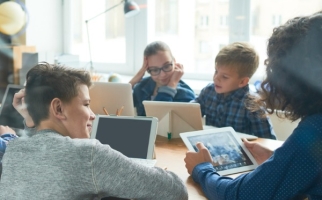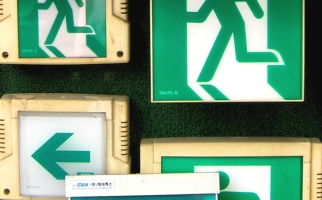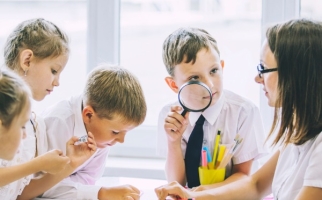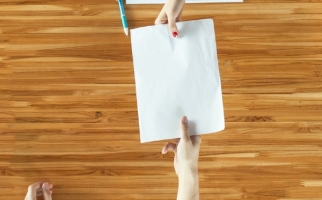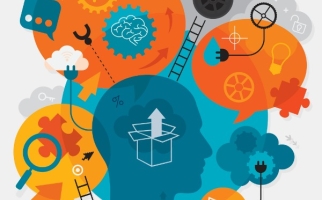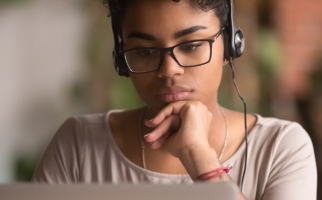Reflecting
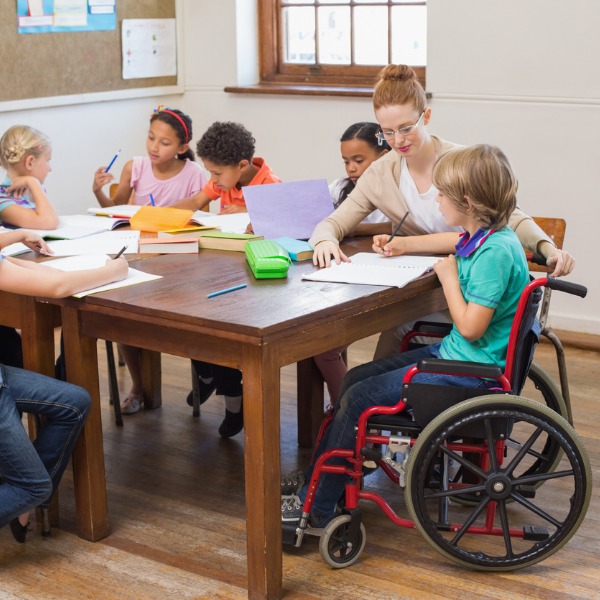
Students reflecting on their work with teacher (Wavebreakmedia, iStockphoto)

Students reflecting on their work with teacher (Wavebreakmedia, iStockphoto)
How does this align with my curriculum?
Reflecting is a process whereby students use critical thinking skills to look back on a learning experience in terms of things that went well and areas where there may be room for growth/change.
Definition
Reflecting is a process whereby students use critical thinking skills to look back on a learning experience in terms of things that went well and areas where there may be room for growth/change. For example, students may reflect on a Design & Build challenge in terms of how well their prototype design met the established criteria. Students’ reflections may also be in the form of a self-assessment. For example, students may reflect on how well they worked as a member of a collaborative group. In both cases, student reflections should include things that were done well (e.g., the accuracy of their predictions in an Inquiry or a Design & Build) as well as things that they would do differently next time/areas for growth (e.g., “Next time I am working in a group I will try to make sure everyone has a chance to speak.”).
Reflecting is important because it…
- promotes development of critical thinking and self- and peer assessment and skills
- fosters students’ abilities to make connections between prior knowledge and current learning
- encourages students to make inferences (e.g., about why a design either did or did not meet the criteria; about why only a few members of the group contribute to discussions) and draw conclusions (e.g., the design didn’t work because of the materials chosen; someone in the group needs to be responsible for making sure everyone gets a chance to speak)
- fosters development of students’ metacognition skills (e.g., the ability to transfer learning to new contexts)
- can lead to improvement when what is learned through reflection is applied to future learning experiences
Teaching and Learning Reflecting
Students |
Educators |
|---|---|
|
Engage in self- and peer assessment |
Provide multiple opportunities for self- and peer assessment in a variety of contexts. Ask questions that encourage metacognitive thinking (e.g., “What was easy for you in this inquiry? What was not as easy for you? What do you think is something you should work on?”). Model reflective questions (e.g., What would you do differently next time?”; “What did your group do when you ran into problems with your design?”; “What other strategies could you use to make sure that everyone in your group has a job to do?”). Model the use of success criteria (e.g., “Your marble run needs to have 2 cross-over points. Where in your sketch have you shown those 2 points?”; “The role of the Facilitator in a group is to make sure everyone has a chance to speak. What did you do to make sure that happened in your group?”). Provide descriptive feedback (e.g., “I notice that you chose to record the findings from your inquiry in a chart. What could you add to the chart that would more clearly show what happened?”; “You used the ‘talking stick’ strategy to get everyone in your group talking. I saw that some students weren’t quite ready to speak but were unsure what to do. How can you make this clearer to the group another time?”). |
|
Make connections between prior knowledge and current learning |
Allow time to find out what prior knowledge and experiences students bring to new learning opportunities. Model how graphic organizers such as mind maps and KWL charts help students make visible what they already know and what new learning they want to pursue. |
|
Understand that all products and systems are subject to failure, and that failure is a valuable learning experience Are thoughtful and reflective learners who examine and learn from their own mistakes and approaches |
Support students when their designs fail to meet criteria as this can be a difficult experience. Remind students that many designs fail the first time around, but that there is still much to be learned when a design does not work right away (e.g., “I see that your boat sank. Why do you think that happened? What can you learn from that?”). |
|
Make inferences and draw conclusions |
Model what it sounds like to make inferences and draw conclusions about a learning experience (e.g., “I think our lesson on wheels and axles wasn’t as useful for your group as I had hoped. It would have been more helpful if each of you had built your own instead of working in pairs.”). Provide multiple opportunities for students to make inferences and draw conclusions, in a variety of contexts (e.g., “One of your observations was that the mystery powder fizzed a lot when you added vinegar to it. Your conclusion was that the mystery powder must have a lot of baking soda in it. What made you come to that conclusion?”; “When you tested your water tower it was unable to meet the criterion of supporting the bottle of water. Your group thinks that is because your design did not have a strong enough foundation. How did you come to that conclusion?” “Your reflection suggests that you think your group’s design did not meet the criteria because some students thought their idea was better than others. What conclusions can you make from that observation?” ). |
|
Engage in metacognition |
Engage in “think alouds” as a model for students (e.g., verbalize your thinking as you visualize and sketch a possible solution to a design challenge; reflect aloud about your thinking about what would have made a small-group directed teaching lesson about building wheels and axles more successful). |
Related Skills
Related Learning Strategies

